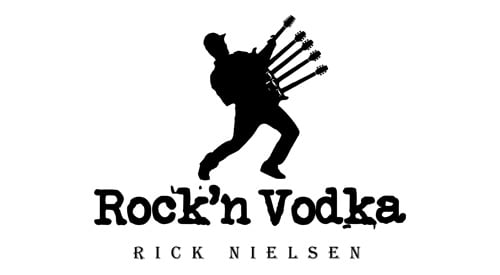was basketball stolen from its inventor?
November 13, 2023
After over a year of research and analysis the BOOK is now released that details why Herkimer’s claim as the origin of Basketball is fact and not folklore. Learn how Lambert Will came up with the idea when he was sorting cabbage for his mother to make sauerkraut in the cellar in 1890 – by tossing them into one of two peach baskets – and how this then moved to the local Grocery Store (w/friends) – and then to the YMCA in Herkimer.
Learn what evidence exists that James Naismith was a benefactor of almost a year of Basketball being played in the Mohawk Valley before its profile and basic rules were sent to him – resulting in him publishing the game and rules in the YMCA nationally distributed Triangle newsletter – causing his name to be aligned with the invention of the game – to which he welcomed the resulting acclamation and fame.
Check out what the local and national press are saying about this breakthrough investigative book on the Origins of Basketball:
Brion Carroll on Inside the Cut on March 25, 2022
Matt Baldwin on Inside the Cut on March 23, 2022
Bill Keeler / WIBX 950, 106.9 FM Talk Radio
WKTV Channel 2 (Utica, NY) Coverage on 24-Feb-2022
BACKGROUND / BACK-STORY: During the decade of the 1950s, while efforts were underway to establish the Dr. James Naismith Basketball Hall of Fame in Springfield, Massachusetts, a bitter war-of-words pitting proponents of Dr. Naismith against those of Lambert Will raged. In the end, the Naismith side, having garnered the support of some within the national media, along with corporate sponsors, major sports organizations, and individuals within professional and collegiate basketball circles, won out. The Dr. James Naismith Basketball Hall of Fame officially opened in Springfield in 1959, with no mention of Herkimer, N.Y., Lambert Will, nor the debate preceding the site’s construction. In the eyes of the Dr. James Naismith Basketball Hall of Fame and its supporters, the debate was over and their version of history with Naismith as the game’s inventor, was cemented in the annals of history.
In the years since, the Herkimer claims and accusations have failed to go away, and the initial evidence has remained a constant thorn-in-the-side of mainstream historians and traditionalists who prefer to promote the Naismith storyline and/or have profited from the Hall of Fame, Naismith’s 13 Basketball Rules document, and the selective branding, and promotion of basketball’s origins history.
For many Herkimer and Lambert Will supporters, having basketball’s creation credited to Springfield and Dr. James Naismith is akin to a stolen legacy and a disservice to the historical record. These critics of the Springfield and ‘Nais-Myth’ narrative view the Herkimer-Springfield basketball debate as one that demands resolution and this book is the historical analysis that demands a verdict; and the verdict is to correct the official record by proving that it was Lambert Will who invented Basketball, and the Village of Herkimer, with the support of surrounding communities that formed the game of Basketball.
HISTORIC AND GROUND-BREAKING FINDINGS
From 1890 thru 1893, the game of basketball spread along a fixed route, across the four states of New York, Massachusetts, New Jersey, and Pennsylvania. This ‘Basketball Road’ began in Herkimer and moved east to Little Falls, Amsterdam, Albany, Troy, Holyoke, and eventually Springfield. It also moved west to Mohawk, Ilion, Utica, Syracuse, Ithaca, and Rochester ending at Cornell University, and the University of Rochester.
From 1892 to 1893 this sporting road expanded south from Springfield to New York City, Trenton, Philadelphia and Scranton. To date, most of these communities have not been recognized for their historic contributions to the develop of the game of basketball;
James Naismith and Luther Gulick deserve to be recognized and inducted in the basketball Hall of Fame, but not as inventors or motivators behind the creation of the sport. Instead, their contributions were those as promoters and builders;
Springfield, MA should be seen not as the birthplace of basketball, but as one of the first communities where basketball was played;
Springfield College should be recognized as the site where the first rules of basketball were published;
Holyoke, MA should be recognized as home to the first game of basketball played in Massachusetts;
Cornell University should be recognized as the first college or university to play intramural basketball;
The University of Rochester deserves recognition as the first college or university to host a varsity game, a match between themselves and the local YMCA;
The University of Kansas should recognize Amos Alonzo Stagg as the man who introduced the game of basketball to their institution, and not James Naismith whom they continue to incorrectly promote as the founder of their program;
The University of Manitoba is in all likelihood, and based on the Amos Alonzo Stagg research, the site of the first college basketball game in Canada;
The communities of Utica, Syracuse, Ilion, Amsterdam, Mohawk, Little Falls, Troy, and Albany should be recognized as the first communities and cities of the historic “Basketball Road”. New York City, Trenton, Philadelphia, Wilkes-Barre, and Scranton should be seen as the southern cities of the Basketball Road;
Frank Basloe, Basloe’s Globe Trotters, and the Herkimer Nine should be recognized by the Basketball Hall of Fame;
Herkimer, NY should be acknowledged as the birthplace of basketball; and
Finally, a 16-year-old Austrian-American teenager named Lambert Will should be credited as the inventor of basketball.
HISTORICALLY SIGNIFICANT CONTENT
• The first book to fully investigate the origins of basketball controversy;
• Reveals never before published documents, historic records and findings pertaining to the origins of basketball;
• Presents a detailed discussion on the game’s origin and development;
• Investigates the role played by James Naismith and Luther Gulick;
• Investigates the role played by Lambert Will;
• Chronicles the 1950s debate into the origins of basketball;
• Documents the spread of the game across Northeast United States from 1891 to 1895 along the historic and never-before-revealed ‘Basketball Road’;
• Contains 30 photographs and illustrations; and
• Over 180 pages of fact filled details that are not to be missed and no longer ignored.
ABOUT THE AUTHORS
Darril and George Fosty are two of North America’s leading author’s and historians in the field of sports history. For nearly two decades, these Canadian brothers have been in the forefront of efforts to promote and preserve the early history of North American sports.
The Fosty brothers began their careers in 1986 as military historians. In 1996, they turned their attention to the sport of ice hockey documenting the early worldwide histories of the sport and the cultures that played its many forms. They are the authors/co-authors of twelve books including: Black Ice: The Lost History of the Colored Hockey League of the Maritimes, 1895 to 1925 , Splendid is the Sun: The 5,000 Year History of Hockey, Tribes: An International Hockey History and Where Brave Men Fall: The Battle of Dieppe and the Espionage War Against Hitler, 1939 to 1942.
Their 2004 book, Black Ice, is considered a ground-breaking achievement and remains the only book ever written on the all-black Colored Hockey League of the Maritimes. In 2008, they were honored by the Denver-based Shaka Franklin Foundation for their efforts pertaining to the preservation of Black hockey history and the creation of ” The Black Ice Project.” In 2011, the brothers received an honorary Teaching Award from George Washington University’s Jackie Robinson Society (Washington, DC) for the promotion of black history. In 2019, Book Authority selected Black Ice as one of the top 37 (#28) ice hockey books of all-time. In 2020, the Fosty brothers were awarded the John G. Dennison Award for excellence in the promotion of Canadian Black history and culture.
Brion Carroll
Brion Carroll is a native of Herkimer and is an industry independence consultant, most recently serving as the Vice President, Global Business Development in the Retail Business Unit at PTC, amassing over 37 years of experience in the Product Lifecycle Management (PLM) and related industries; with the last 19 years focused in providing PLM to the Retail & Consumer market. Prior to his tenure at PTC, Mr. Carroll was founder, CEO and President of Aptavis Technologies Corporation, the company that developed the industry leading FlexPLM product, acquired by PTC in 2005. Previously he founded and served as CEO of Life Cycle Solutions, Inc, a globally renowned PDM/PLM industry consulting firm from 1992 and held various technology roles at GTech and Computervision since 1980.
Brion Carroll has authored numerous articles and white papers and is an advisor to industry on technologies that improve operational efficiency, enable collaborative work environments, and provide real-time information visibility; and most recently the emerging Internet-of-Things (IoT) technology in Retail & Consumer market and the industry transforming Material Exchange. Mr. Carroll has a Bachelor of Science in Business Management, an MBA with a concentration in Global Management from the University of Phoenix, and is a veteran of the US Air Force.
BOOK
Darril and George Fosty with Brion Carroll
NAIS-MYTH: BASKETBALL’S STOLEN LEGACY
ISBN-13: 9798419854970 Publisher: Stryker-Indigo Publishing Company, Inc. Hardcover Book Release Date: February 22, 2022. Available in through Amazon.com @ the price: Hardcover @ $34.95; Softcover @ $24.95; Kindle @ $9.99.













